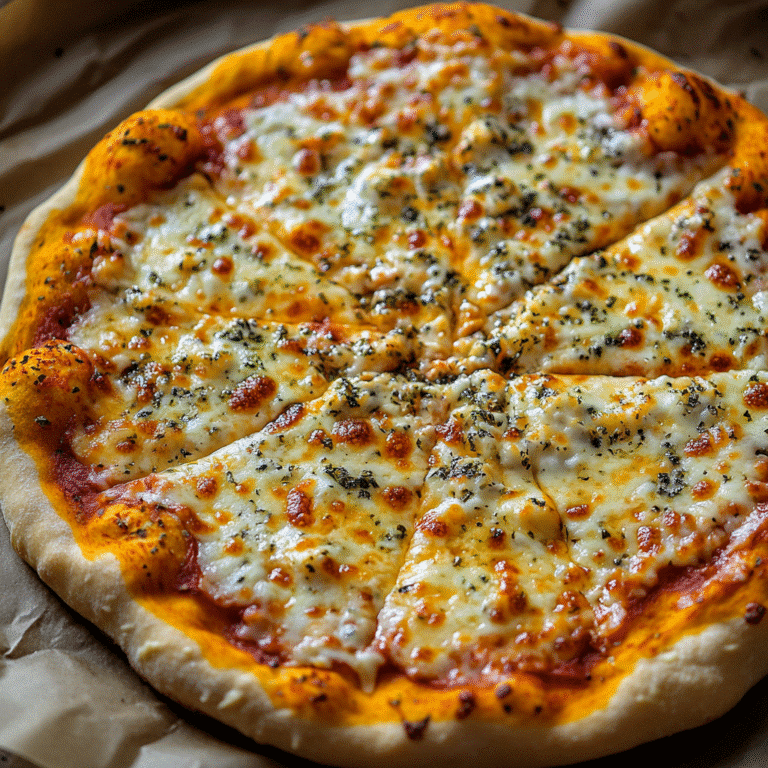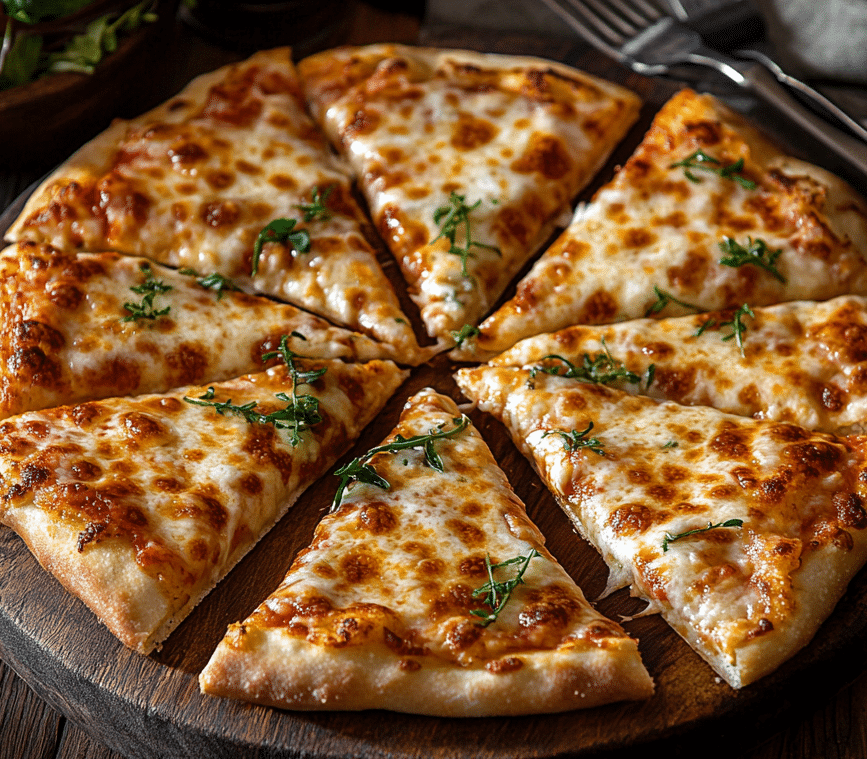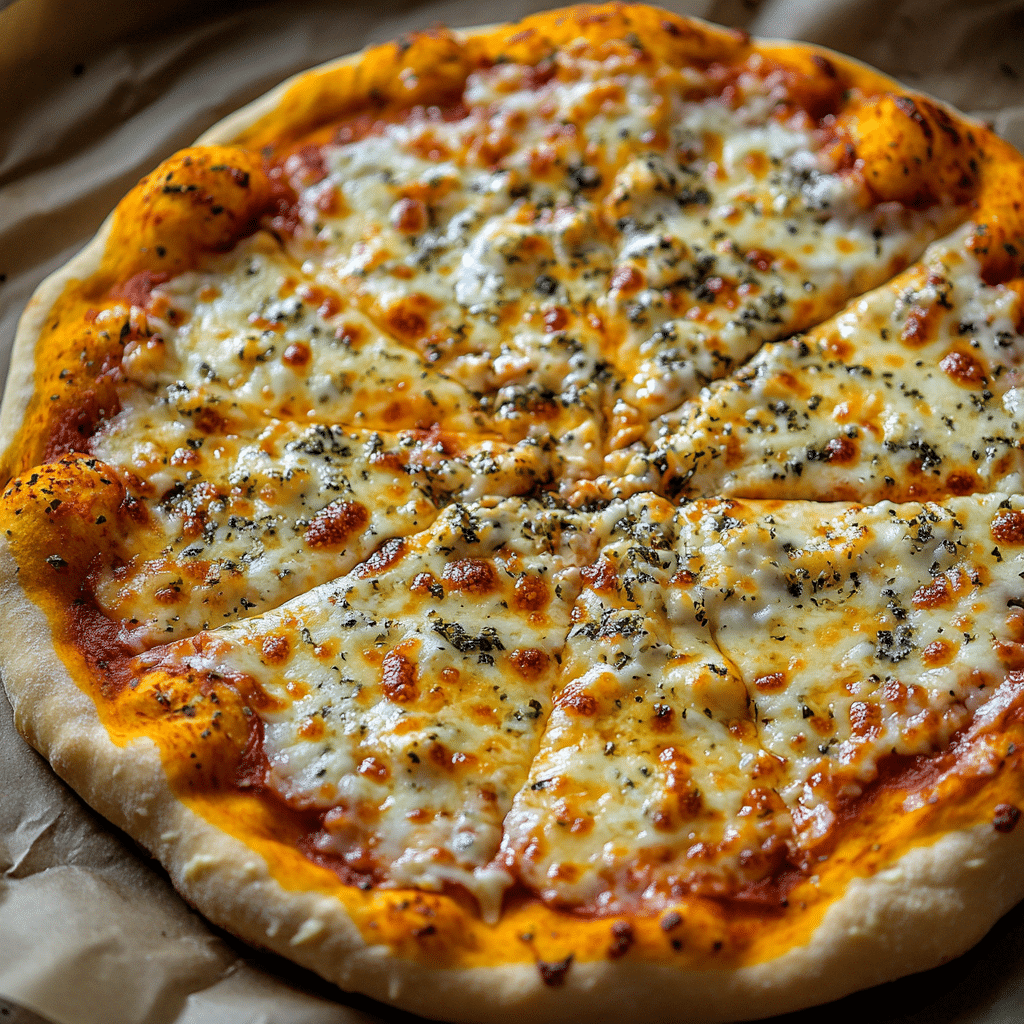Craving a pizza that’s light, flavorful, and packed with protein? Cottage Cheese Pizza Crust offers exactly that. In this article, we’ll dive into why this crust became my go-to, how it stacks up against classic dough, and, most importantly, how you can make it in your own kitchen. Whether you’re a seasoned home cook or just exploring new ways to enjoy pizza, “Cottage Cheese Pizza Crust” delivers a delicious twist. I’ll guide you through ingredients, step-by-step instructions, topping ideas, and health tips. Let’s start this journey—getting that perfectly crisp, cheesy crust is easier than you think!
Print
Cottage Cheese Pizza Crust: A Healthy, High-Protein Twist
A light, protein-rich pizza crust made with cottage cheese. Gluten-free, quick to prepare, and perfect for low-carb diets.
- Total Time: 20 mins
- Yield: 1 pizza crust 1x
Ingredients
1 cup full-fat cottage cheese
2 large eggs
1/2 cup almond flour (or oat flour for gluten-free option)
1/2 tsp garlic powder
1/2 tsp Italian seasoning
1/4 tsp salt
Optional: 2 tbsp shredded mozzarella for edge crisping
Instructions
1. Preheat oven to 425°F (220°C). Line a baking sheet with parchment paper.
2. Blend cottage cheese, eggs, flour, and seasonings until smooth.
3. Spread the mixture into a 1/4-inch thick circle on parchment paper.
4. Bake for 12–15 minutes until golden at the edges.
5. Optional: Sprinkle mozzarella on the edge and bake 2–3 more minutes.
6. Remove and let crust rest 2 minutes before topping.
7. Add sauce and toppings of your choice, return to oven if needed to melt cheese.
Notes
You can substitute almond flour with coconut flour (use less).
Add chopped spinach or herbs for extra flavor and nutrition.
Great base for keto, low-carb, or gluten-free diets.
- Prep Time: 5 mins
- Cook Time: 15 mins
- Category: Dinner
- Method: Baking
- Cuisine: American
Nutrition
- Serving Size: 1 slice
- Calories: 110
- Sugar: 1g
- Sodium: 200mg
- Fat: 6g
- Saturated Fat: 2g
- Unsaturated Fat: 3g
- Trans Fat: 0g
- Carbohydrates: 4g
- Fiber: 1g
- Protein: 10g
- Cholesterol: 55mg
Why Cottage Cheese Pizza Crust Became My Kitchen Staple
The First Time I Tried Cottage Cheese Pizza Crust
I first heard about Cottage Cheese Pizza Crust from a fellow chef while teaching a cooking class . She was experimenting with low-carb alternatives and casually mentioned blending cottage cheese into her crust mix. Skeptical but curious, I tried it that same night. The texture? Crisp on the edges, chewy in the middle. The flavor? Creamy and rich without feeling heavy. It was one of those “why didn’t I think of this sooner?” moments. I shared the recipe with my students, and it quickly became a favorite in my kitchen rotation.
When Flavor Meets Function
What hooked me wasn’t just the taste—it was how functional this crust is. Packed with protein and quick to prep, it’s the kind of recipe that fits busy weeknights without compromising on flavor. Plus, it opens the door to a whole world of healthy pizza options. It also complements my go-to healthy pizza sauce perfectly and pairs well with recipes from my low-carb recipe collection. Today, I keep cottage cheese on hand just for this crust. It’s reliable, satisfying, and way more versatile than you’d expect.
What Exactly Is Cottage Cheese Pizza Crust

Ingredients and How They Work Together
Cottage Cheese Pizza Crust is a minimalist, high-impact recipe built around three simple ingredients: cottage cheese, eggs, and a binder. Cottage cheese serves as the nutritional powerhouse—adding creaminess, moisture, and a mild tang that balances beautifully with savory toppings. It also delivers a solid boost of protein and calcium, which makes the crust more satiating. Eggs play the glue role, binding everything together into a spreadable batter that holds its shape during baking. The third player, a flour-like binder—commonly almond flour or oat flour—gives the crust structure. Almond flour is popular for its nutty flavor and low-carb content, while oat flour adds a mild, wholesome touch.
You can adapt this mix based on your dietary needs. If you’re aiming for extra fiber, try incorporating ground flaxseed or psyllium husk. For gluten-free options, a combination of oat flour and tapioca starch works well. Craving a more rustic flavor? Whole wheat flour or spelt can bring depth to the base. This flexibility means you’re not locked into one texture or nutritional profile—this crust evolves with your preferences.
How It Compares with Traditional Crusts
Compared to classic pizza dough, which needs yeast, sugar, oil, and plenty of kneading time, this cottage cheese version is refreshingly easy. No yeast, no rising, and no long wait times. Mix, spread, bake—it’s that fast. The baked crust has a thinner profile, closer to flatbread, but with a soft center and golden, crisp edges. Its flavor is more neutral, making it a great canvas for everything from bold marinara to delicate veggie toppings.
From a health perspective, this crust is a major upgrade. It drastically cuts down on refined carbs, thanks to the lack of white flour. Instead, you’re feeding your body protein, healthy fats, and real food ingredients. Whether you’re managing blood sugar, looking for a post-workout meal, or just trying to feel better after pizza night, cottage cheese crust makes it possible to enjoy your favorite food without the heavy crash.
How to Make Cottage Cheese Pizza Crust Step‑by‑Step
Quick Prep and Mixing Tips
Crafting a delicious Cottage Cheese Pizza Crust starts with high-quality, simple ingredients. You’ll need 1 cup of full-fat cottage cheese (low-fat works too, but won’t brown as well), 2 large eggs, and ½ cup of almond flour. If you prefer a nut-free or gluten-free option, try oat flour or a mix of chickpea and rice flour. Begin by combining everything in a food processor or high-speed blender. Pulse until the batter is completely smooth—this helps prevent any curd texture from showing up in your finished crust.
Make sure to scrape down the sides of your blender to ensure all the flour incorporates evenly. If the mixture looks too runny, add an extra tablespoon of almond flour. Conversely, if it’s too thick, a splash of milk or water will thin it out. Seasoning is where you can really personalize it. A pinch of salt, garlic powder, dried oregano, or even crushed red pepper flakes can infuse flavor right into the base—turning this crust into more than just a healthy swap. Let the mixture rest for five minutes before baking so the flour fully absorbs the moisture.
Baking Times & Secret Cheese Trick
Line a baking sheet or pizza stone with parchment paper and preheat your oven to 425°F (220°C). Pour the mixture onto the parchment and spread it into a circular or oval shape about ¼ inch thick. A silicone spatula makes this easier, giving you control over even thickness—essential for balanced cooking. Bake for 12–15 minutes until the edges firm up and the center turns a light golden color. For best results, rotate the tray halfway through baking to ensure even browning.
Here’s where it gets good: remove the crust, sprinkle a light ring of shredded mozzarella or parmesan around the edge, and return it to the oven for another 2–3 minutes. This creates a golden, lacy cheese crust that crisps up as it cools—a feature you won’t get from traditional dough. Let the crust sit out for a couple of minutes after baking. This pause helps the proteins set and reduces the risk of sogginess once you add your sauce and toppings. From here, it’s ready to be topped, toasted, and devoured.
Serving, Toppings & Variations for Cottage Cheese Pizza Crust

Top It Like a Pro
Now that your Cottage Cheese Pizza Crust is perfectly baked and rested, the real fun begins—toppings. A well-balanced base deserves the right layers, and this crust pairs beautifully with both classic and adventurous choices. Start with a light coating of sauce; tomato-based marinara is a go-to, but don’t overlook pesto, creamy white garlic sauce, or a spicy arrabbiata for a bolder twist. Spread your sauce thin to avoid overwhelming the crust’s delicate balance between creamy and crisp.
Next, load up on your proteins—grilled chicken, sliced turkey sausage, or even seasoned tofu all sit beautifully atop this crust without weighing it down. Roasted vegetables like bell peppers, mushrooms, zucchini, or caramelized onions add flavor, fiber, and texture. For a burst of freshness, toss on some arugula or baby spinach after baking. When it comes to cheese, you’re not limited to mozzarella. Crumbled feta, dollops of ricotta, or a sprinkling of parmesan can all shine here.
Once your toppings are in place, pop the pizza back in the oven for about 5 more minutes—just enough to warm everything and melt the cheese. The edges should bubble slightly, and you’ll know it’s ready when the aroma fills your kitchen. Cut into triangles or squares and serve with a light side salad or roasted veggies for a balanced, satisfying meal.
Diet-Friendly Variations
This crust’s adaptability makes it ideal for a range of diets and preferences. For a low-carb or keto version, swap the almond flour for coconut flour—but remember, coconut flour absorbs more moisture, so use only ¼ cup and consider adding an extra egg. If you’re aiming for gluten-free, a mix of oat flour and ground chia seeds binds well and adds fiber.
For vegetarians or anyone seeking extra nutrients, add finely grated zucchini, spinach, or even mashed sweet potato to the batter. Just squeeze out excess moisture first. Want more protein? Mix in a tablespoon of unflavored whey, pea, or hemp protein powder. This works especially well for post-workout meals or muscle-building plans.
Even dairy-free eaters can get in on the fun—just use a dairy-free cottage cheese alternative and vegan parmesan or cashew-based cheese. The crust bakes up similarly and still delivers great texture. With a base this flexible, it’s easy to make pizza night work for everyone at the table, without sacrificing flavor or crunch.
for more recipes follow our facebook page
Conclusion
Cottage Cheese Pizza Crust has changed the way I think about homemade pizza. It’s quick, customizable, and filled with real nutrition—perfect for weeknight dinners or meal prep. With a creamy base and crispy edge, it’s a delicious alternative to traditional dough. Whether you’re managing carbs, boosting protein, or just trying something new, this crust delivers big flavor with minimal fuss. Try it out and explore your favorite topping combos. Cooking, after all, should always be about joy—and this recipe never fails to bring it.
Can I make pizza dough with cottage cheese?
Yes! Cottage cheese makes a surprisingly effective base for pizza dough when combined with eggs and a flour alternative like almond flour. It creates a high-protein, low-carb crust that holds up well under toppings and offers a creamy, slightly tangy flavor.
Does cottage cheese melt on pizza?
Cottage cheese doesn’t melt like mozzarella, but it softens and spreads when baked. On a crust, it integrates smoothly into the base. If used as a topping, it adds creamy texture but won’t produce the typical cheese stretch.
What is the healthiest crust for pizza?
A cottage cheese pizza crust ranks among the healthiest options. It’s low in carbs, high in protein, and packed with calcium. Compared to refined white flour crusts, it’s more nutrient-dense and fits well into keto, gluten-free, and high-protein diets.
Is cottage cheese just cheese curds?
Not exactly. While cottage cheese contains curds, it’s not just curds. It’s a fresh cheese made from curds and whey, often with a bit of cream added. Its moisture and mild flavor make it ideal for recipes like this pizza crust.
